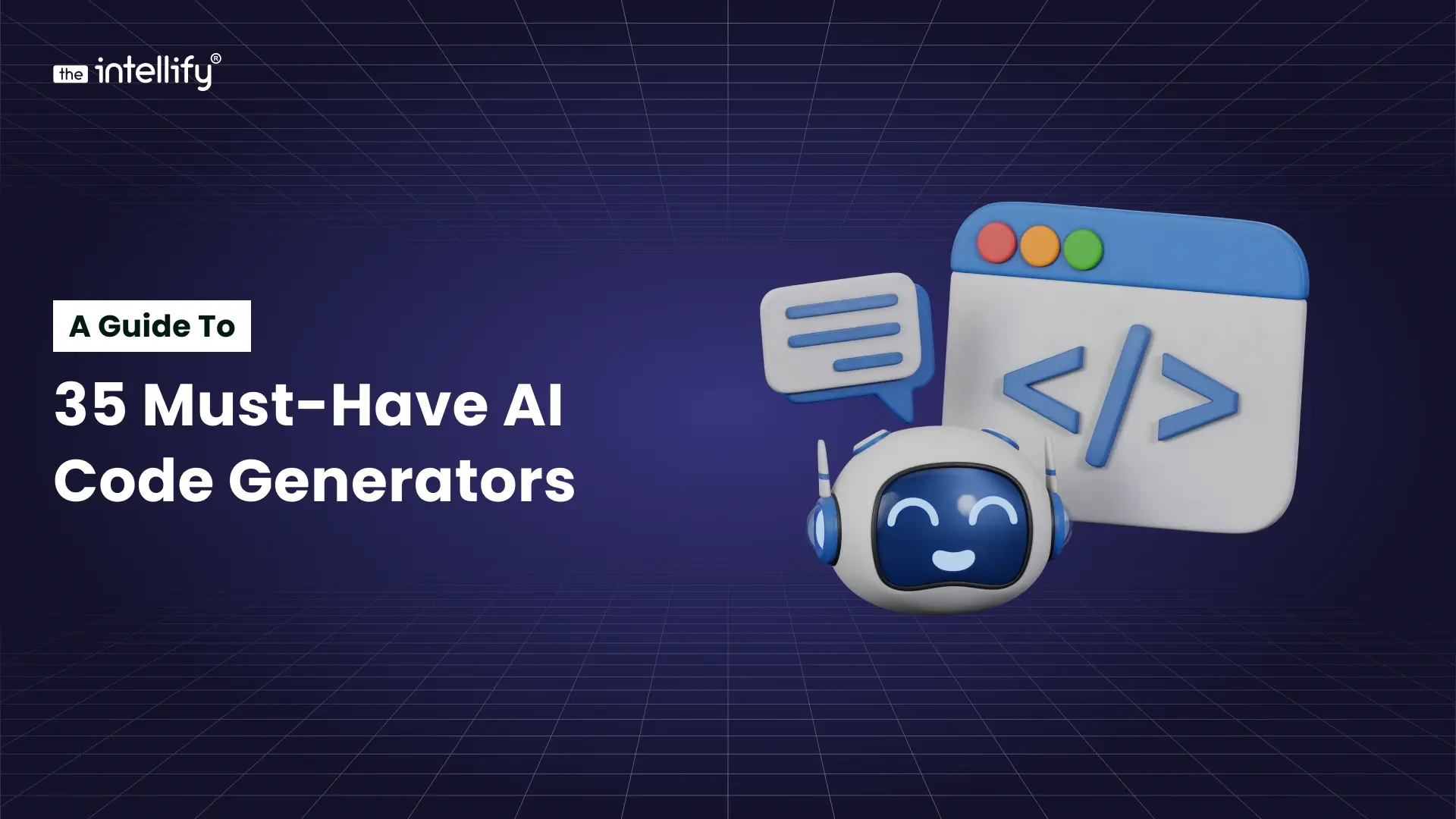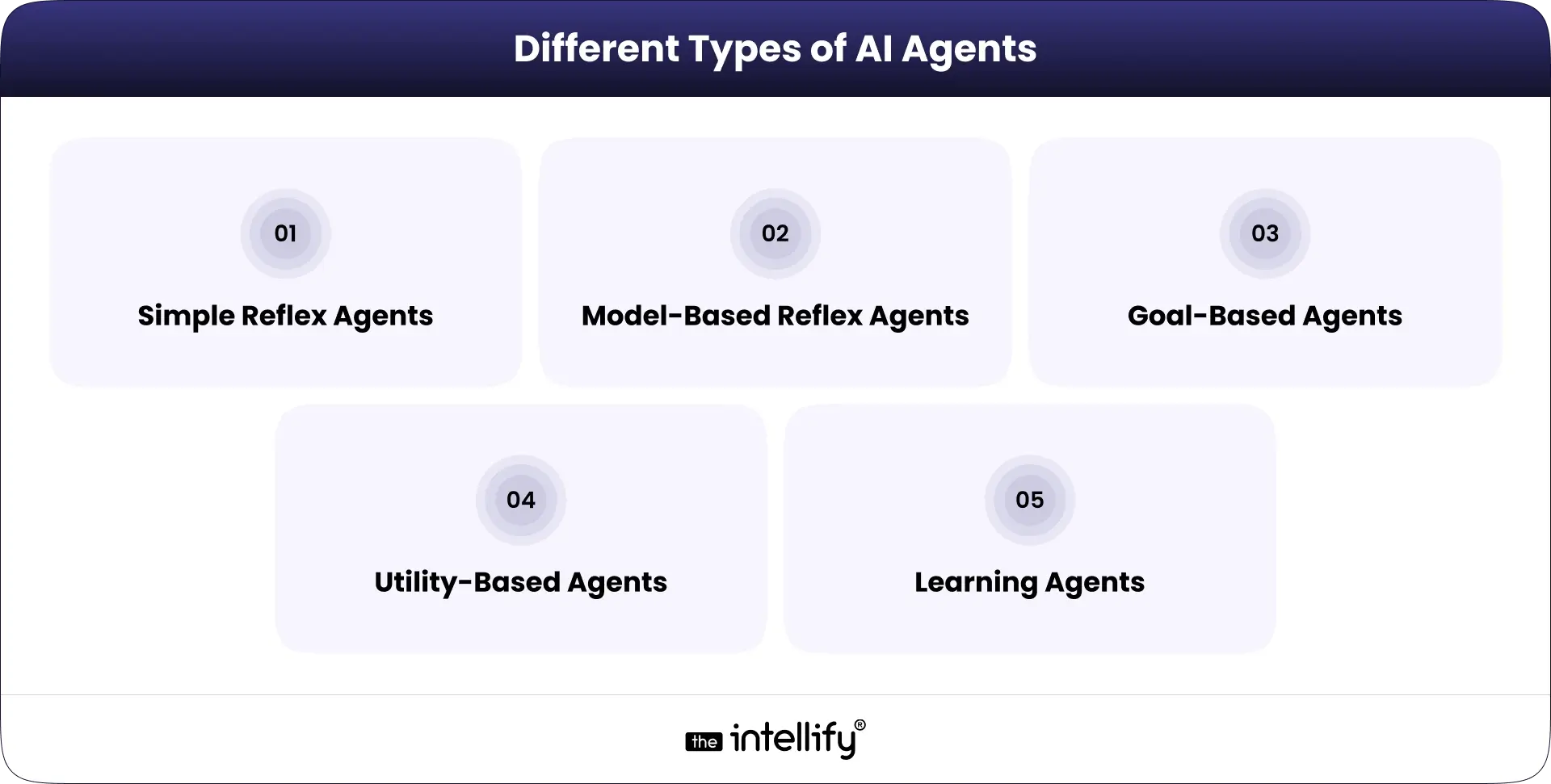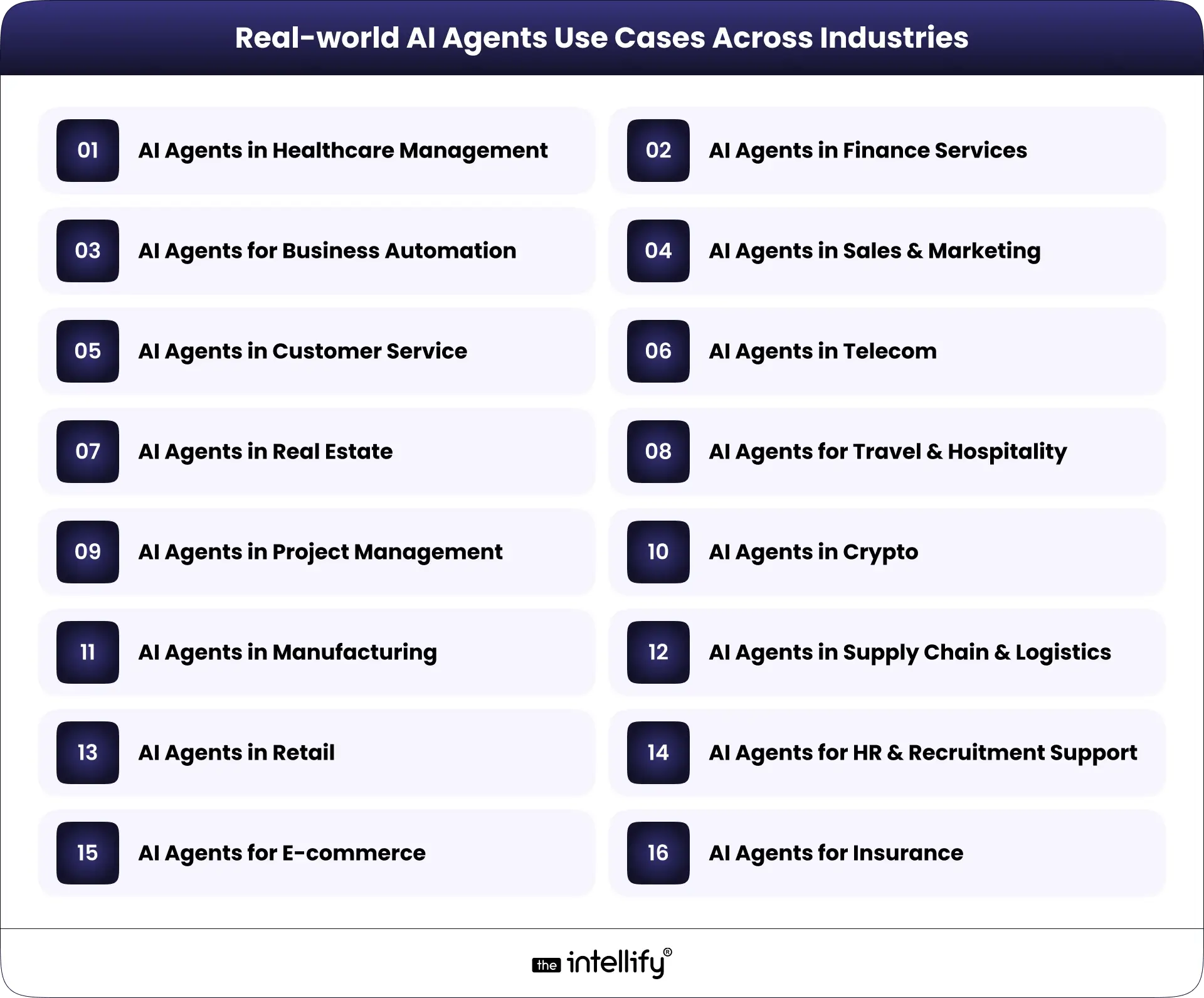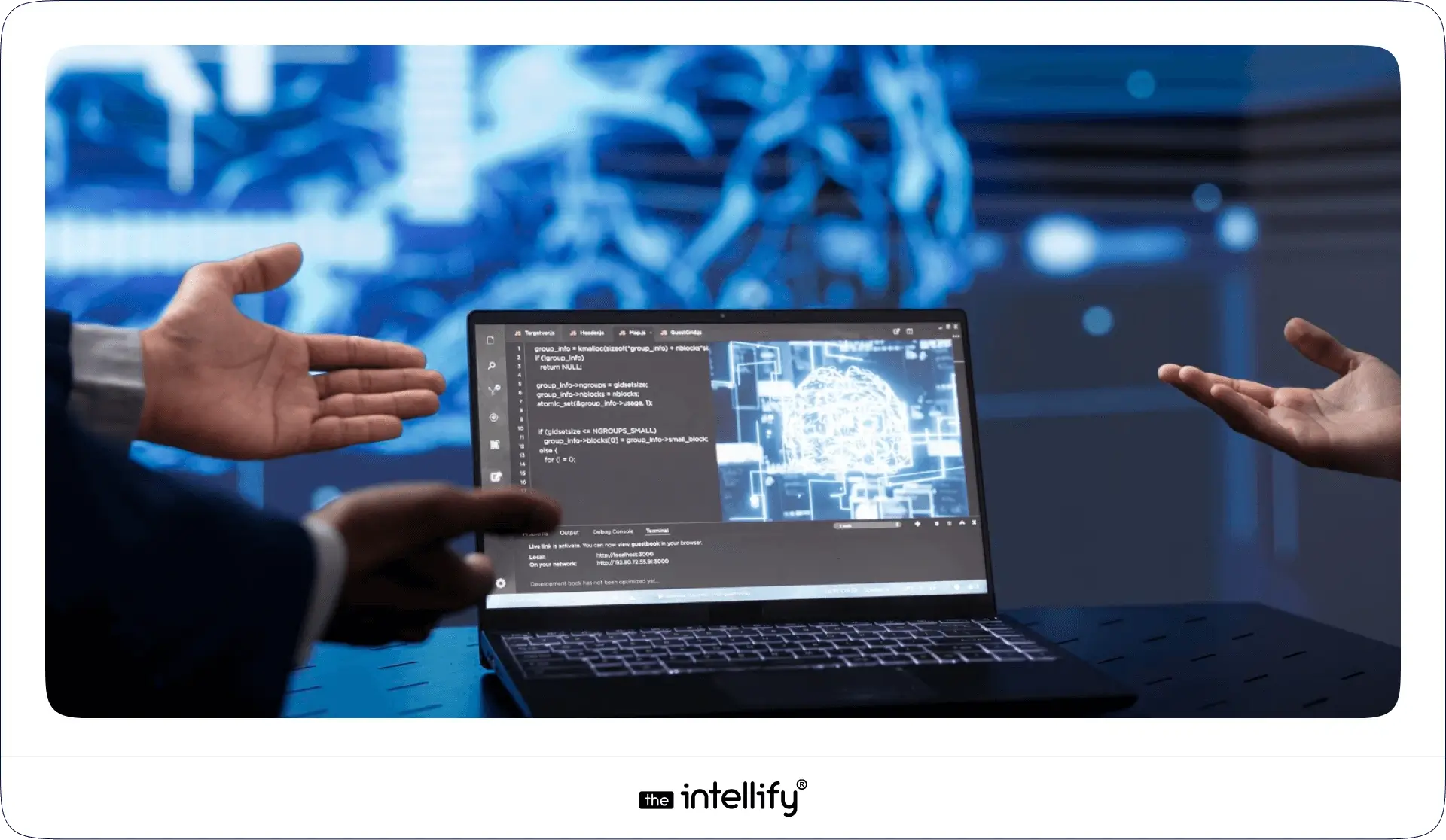Summary
This guide offers a comprehensive overview of vibe coding, a revolutionary AI-assisted development approach that transforms ideas into applications using natural language. We examine the significance, advantages, and potential drawbacks of 35 key AI code generators, offering a comprehensive analysis. Whether you’re a seasoned developer or a non-coder, this article will help you navigate the best AI tools available to bring your vision to life.
From Conversation to Creation: An Introduction to Vibe Coding
The world of software development is undergoing a seismic shift. For decades, building an application required a deep, line-by-line understanding of complex programming languages. Today, a new paradigm is emerging, one that prioritises intent over syntax and conversation over commands. This is the era of vibe coding, a revolutionary approach where developers and even non-coders can bring ideas to life simply by describing what they want to an AI.
This guide serves as your definitive map to this new landscape. We will explore the concept of vibe coding, unpack its benefits and risks, and provide an expert analysis of 35 of the best vibe coding tools and AI code generator platforms available today. Whether you’re a founder looking to build a prototype, a designer wanting to create a functional UI, or a professional developer aiming to supercharge your workflow, the right coding AI is on this list.
What is Vibe Coding? Decoding the Future of AI Code Generation

So, what is vibe coding? The term, coined by AI researcher Andrej Karpathy in early 2025, describes an AI-assisted development style where the creator’s role transforms from a meticulous coder into a high-level director. Instead of writing code, you guide a Large Language Model (LLM) through natural language prompts, describing your vision and letting the AI handle the implementation.
Karpathy’s core philosophy was to “fully give in to the vibes, embrace exponentials, and forget that the code even exists,” highlighting a workflow focused on iterative experimentation rather than perfect syntax from the start.
This new method of AI code generation is made possible by three key technological breakthroughs:
- Transformer Models: Advanced neural network architectures that allow AI to understand the context and relationships in language, both human and programmatic.
- Reinforcement Learning from Human Feedback (RLHF): A training technique that teaches AI models to produce code that is not just technically correct but also readable, efficient, and secure.
- Massive Code Datasets: LLMs are trained on billions of lines of code from open-source repositories like GitHub, giving them a deep understanding of programming patterns and best practices.
In practice, vibe-coding exists on a spectrum. On one end is “pure” vibe coding, where non-technical users build entire apps through conversation, trusting the AI’s output for rapid ideation. On the other end is responsible AI-assisted development, where professional developers use
AI coding tools as powerful pair programmers to accelerate their work, while still reviewing, testing, and ultimately owning the final code.
The New Workflow: Benefits and Limitations of AI Coding
Adopting Vibe code platforms offers tremendous advantages. Teams report accelerated prototyping, turning ideas into functional products in a fraction of the traditional time. This approach also democratizes development, empowering product managers, designers, and entrepreneurs to build software without needing to be expert programmers. For professional developers, these tools eliminate tedious boilerplate and automate repetitive tasks, freeing them to focus on high-level architecture and complex problem-solving.
However, this new power comes with critical limitations. The output from an AI code generator can be unpredictable and may contain hidden bugs or security vulnerabilities inherited from its training data. Debugging can be challenging, as the AI may prefer to regenerate code rather than identify the root cause, potentially leading to technical debt and what some have called a “vibe-coded mess”.
This underscores the importance of human oversight. As programmer Simon Willison noted, if you review, test, and understand every line of code the AI writes, you’re not just vibe coding, you’re using an LLM as a highly effective assistant. This distinction is crucial for building robust, production-ready applications.
The Vibe Coding Market: Statistics and Trends
The shift towards AI-augmented software engineering is not just a conceptual trend; it’s a rapidly expanding market backed by significant investment and widespread adoption. The numbers paint a clear picture of an industry in transformation.
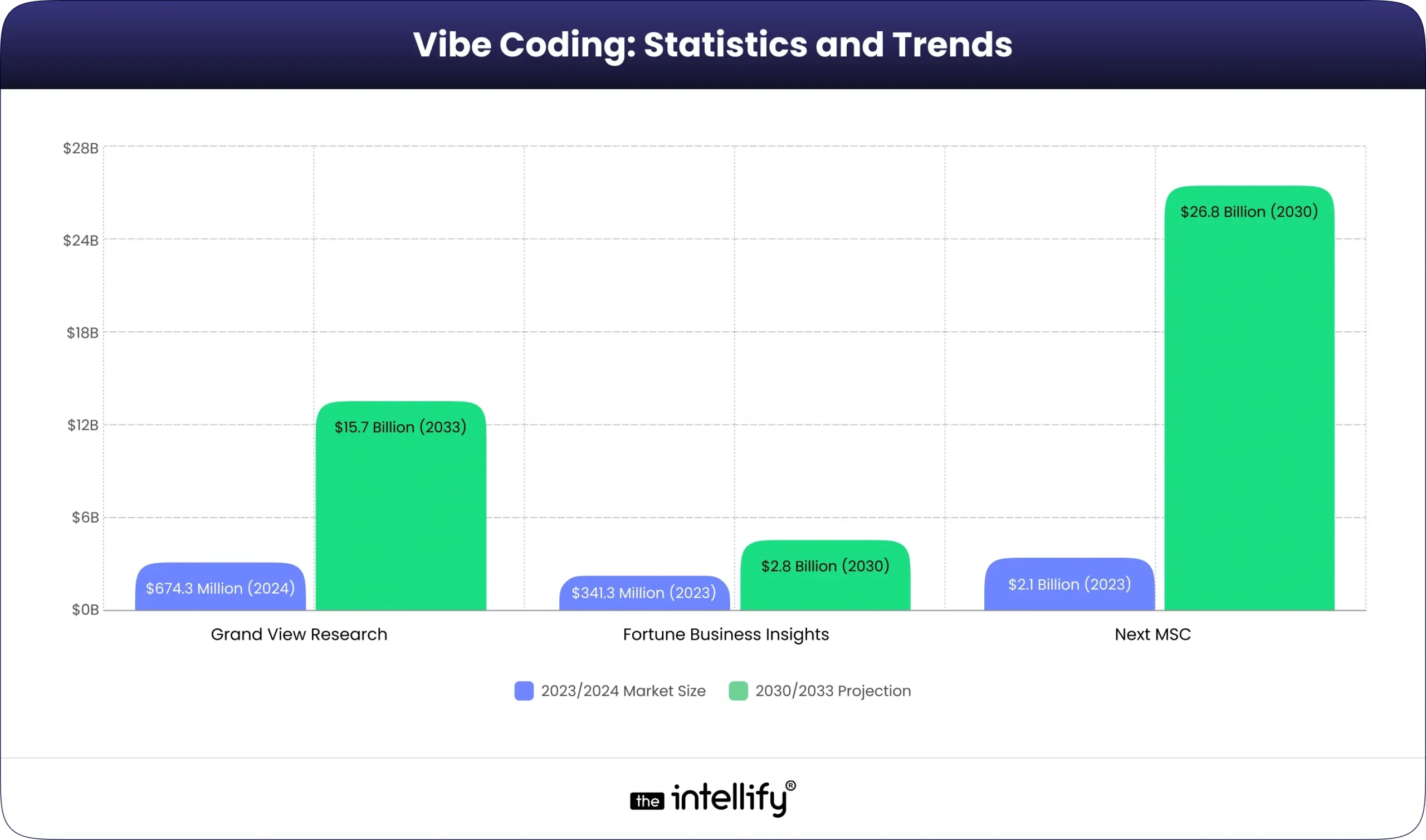
Market Growth and Projections
The market for AI in software development is experiencing explosive growth. While different reports use varying scopes, they all point towards a massive expansion. In 2024, the global market was valued at approximately $674.3 million and is projected to soar to $15.7 billion by 2033, reflecting a compound annual growth rate (CAGR) of 42.3%. Another analysis focusing on the AI Augmented Software Engineering market valued it at $2.1 billion in 2023 and predicts it will reach $26.8 billion by 2030.
| Report Source | 2023/2024 Market Size | 2030/2033 Projection | CAGR |
|---|---|---|---|
| Grand View Research | $674.3 Million (2024) | $15.7 Billion (2033) | 42.30% |
| Fortune Business Insights | $341.3 Million (2023) | $2.8 Billion (2030) | 35.30% |
| Next MSC | $2.1 Billion (2023) | $26.8 Billion (2030) | 37.50% |
North America currently dominates the market, accounting for over 42% of the global revenue share in 2024. However, the Asia Pacific region is projected to be the fastest-growing market. The primary driver for this growth is the code generation and auto-completion segment, which holds the largest revenue share.
Developer and Enterprise Adoption
Adoption among developers has become nearly universal. A 2025 survey revealed that 97.5% of companies have integrated AI into their software engineering processes. Another study from GitHub found that 97% of engineers are using AI coding tools. This trend is set to continue, with Gartner predicting that by 2028, 75% of enterprise software engineers will use AI code assistants, a dramatic increase from less than 10% in early 2023.
However, there is a gap between individual use and official company policy. While nearly all developers are using these tools, only about 40% report that their employers are actively encouraging and promoting AI adoption.
The Productivity Paradox
The impact of AI on productivity is complex and presents a mixed picture.
- Significant Gains Reported: A majority of studies and surveys report substantial productivity boosts. A Qodo survey found that 78% of developers experience productivity improvements. McKinsey reported that developers using AI tools were 20-50% faster on average for tasks like code generation and refactoring.
- The Experience Gap: The benefits are not uniform across experience levels. Junior developers see the largest gains (21-40%), while senior developers experience more modest improvements (7-16%).
- A Contrarian View: In a randomized controlled trial, experienced open-source developers using AI tools took 19% longer to complete tasks, even though they believed the AI had made them 20% faster. This suggests that while AI excels at generating code quickly, the time spent reviewing, debugging, and integrating that code can sometimes offset the initial speed advantage, especially for complex tasks with high quality standards.
The Vibe Coding Development Cost Landscape
The rapid adoption of AI is fueled by massive investment. Enterprise spending on generative AI applications grew eightfold in 2024, from $600 million to $4.6 billion. The cost of implementing AI can vary significantly based on complexity, ranging from $10,000 for a simple proof-of-concept to over $500,000 for an advanced, enterprise-grade solution.

For individuals and teams looking to get started, the cost of entry for vibe coding tools is quite accessible, with many platforms operating on a freemium model.
| Tool | Free Plan | Pro Plan (per user/month) |
|---|---|---|
| Lovable | Yes | $25 |
| Bolt | Yes | $20 |
| Cursor | Yes | $16 |
| Windsurf | Yes | $15 |
| Replit | Yes | $20 |
| v0 by Vercel | Yes | $20 |
A Deep Dive into the 35 Best Vibe Coding Tools & AI Code Generators
Navigating the rapidly growing market of vibe coding apps can be daunting. To provide clarity, we have categorized the 35 best tools for vibe coding based on their primary use case and target audience, with detailed information on how they work and their key benefits.
For Ease of Use & Rapid Prototyping: The Best Vibe Coding Platforms

These tools are designed for speed, simplicity, and turning ideas into deployed applications with minimal friction. They are the best AI for vibe coding if your goal is to quickly build an MVP, internal tool, or functional prototype without writing code.
Lovable
How it Works: Lovable is an AI-powered platform that builds full-stack web applications from natural language prompts. It uses advanced Natural Language Processing (NLP) to interpret user descriptions and generate the necessary front-end code, back-end logic, and database setup.
The platform integrates with services like Supabase for database management, Stripe for payments, and GitHub for version control, automating much of the setup process. Users interact with the AI through a chat interface, describing features and making refinements in an iterative cycle until the application is ready for one-click deployment.
Key Benefits: The primary benefit is the dramatic acceleration of development, turning ideas into functional prototypes in minutes. It democratizes app creation, making it accessible to non-coders, founders, and designers. Unlike many no-code tools, Lovable generates real, editable code that users own and can export to GitHub, offering both simplicity and control.
Bolt.new
How it Works: Bolt.new is an AI web development agent that operates entirely within the browser, built on StackBlitz’s WebContainers technology. This eliminates the need for any local environment setup.
Users build full-stack applications through a chat-based interface, prompting the AI to generate code, create file structures, and install dependencies. The AI, powered by models like Anthropic’s Claude, has control over the entire development environment and implements changes in real-time.
Key Benefits: Bolt.new’s main advantage is its zero-setup, in-browser environment, which saves hours of configuration time. The AI’s control over the entire stack, from installing packages to running servers, streamlines development significantly. It also features AI-powered debugging that can identify errors and suggest or apply fixes automatically, accelerating the entire build-to-deploy process.
v0 by Vercel
How it Works: v0 by Vercel is a generative AI tool that specializes in creating user interface (UI) components and pages from text prompts or design mockups. It generates production-ready code using modern frameworks like React and styling libraries like Tailwind CSS.
The workflow is iterative; users provide a prompt, v0 generates multiple UI variations, and the user can then select, customize, and refine the output through further conversation or by editing the code directly in the integrated editor.
Key Benefits: Its core benefit is the rapid generation of high-quality, production-ready UI code, which is ideal for prototyping and accelerating front-end development. It’s a powerful tool for designers and product managers to turn mockups into functional components without deep coding knowledge. The code is clean and modular, based on best practices, making it easy for developers to integrate into larger projects.
Replit
How it Works: Replit is a cloud-based Integrated Development Environment (IDE) that includes a powerful AI agent. A key feature is its planning phase, where the AI asks clarifying questions to better understand the user’s requirements before generating code.
It supports a wide range of technology stacks and provides a complete environment for building, testing, and deploying applications, including deep database controls and user authentication.
Key Benefits: Replit’s AI-driven planning process leads to more accurate initial code generation. As a full-fledged cloud IDE, it offers a seamless, end-to-end development experience with real-time collaboration features, making it suitable for both solo creators and teams. Its built-in security scanner also helps ensure code quality.
Softgen by Kortix AI
How it Works: Softgen is an AI web app builder that generates full-stack applications from natural language descriptions. The user describes their vision, and the AI creates a development roadmap and then generates the code using modern frameworks like Next.js. It provides a complete, ready-to-customize environment with built-in integrations for services like Firebase, Resend, and Stripe.
Key Benefits: Softgen allows users to go from an idea to a revenue-generating product in days, without needing to write any code. It stands out for its high-fidelity output and the quality of its design and performance, offering a powerful solution for building full-stack SaaS applications and marketing websites quickly.
HeyBoss
How it Works: HeyBoss positions itself as an “autopilot” for app creation, differentiating itself from coding “copilots.” The user provides an idea in a few sentences, and the AI handles the entire process, design, development, hosting, and integrations autonomously. The user’s primary role is to provide feedback on the final, functional product.
Key Benefits: Its main benefit is extreme ease of use, making it ideal for non-technical users who want to focus purely on their idea and feedback. It includes a built-in database and an AI App Store, which simplifies adding complex functionalities like payment processing without needing separate subscriptions or technical setup.
Create
How it Works: Create is an AI app builder that turns text prompts into functional sites, tools, and applications. It integrates with over 40 services and the latest AI models like GPT-4o and Claude 3.5 Sonnet, allowing users to build powerful AI-native tools and automations without code.
Key Benefits: Create is free to get started and is highly extensible, allowing users to build with any API or data source. This makes it a versatile platform for creating custom AI tools that can be tailored to specific needs.
Creatr
How it Works: Creatr is a no-code platform that allows creators to build an “AI twin” of their personality and voice. By linking social media profiles, the AI learns the creator’s style and can then interact with fans, answer questions, and generate content automatically.
Key Benefits: The primary benefit is monetization through fan engagement. It offers creators a way to generate passive income while fostering a deeper connection with their audience and automating time-consuming interaction tasks.
Glide
How it Works: Glide builds AI-powered business applications from existing data sources like Google Sheets or SQL databases. Its unique approach involves adding an “AI column” to a data table.
Glide then automatically manages the complexities of model selection, prompt engineering, and API calls to perform tasks like generating text, extracting data from images, or converting audio to text.
Key Benefits: Glide makes integrating AI into business workflows incredibly simple, with an interface as familiar as a spreadsheet. It eliminates the technical overhead of managing AI models, allowing businesses to quickly build custom internal tools, CRMs, and portals that leverage AI to automate tasks and provide insights.
Lazy AI
How it Works: Lazy AI is a no-code platform that allows users to create full-stack web applications using natural language prompts. It provides a library of pre-configured workflows for common tasks, enabling users to jumpstart development and add functionality by describing what they want the app to do. The platform handles both front-end and back-end code generation and deploys the app with a single click.
Key Benefits: Lazy AI democratizes software development by making it accessible and fun, even for those with limited technical skills. Its template-driven approach is ideal for quickly building AI tools, bots, and various business applications for finance and marketing.
For Professional Developers & Teams: The Best AI Coding Tools
This category includes accelerators designed to integrate into professional workflows, enhancing productivity, improving code quality, and automating complex tasks. These are the best AI tools for coding for seasoned engineers.

AI-First Code Editors & Pair Programmers
These tools live inside your Integrated Development Environment (IDE) or function as standalone editors, acting as an intelligent collaborator that understands your code.
Cursor:
How it Works: Cursor is a standalone, AI-first code editor designed for maximum productivity. It features a codebase-aware chat that can answer questions and make changes across multiple files. Its agent mode can complete tasks end-to-end, from understanding a prompt to finding context, running commands, and looping on errors until the task is complete.
Key Benefits: Users report massive productivity gains, often calling it a “2x improvement over Copilot.” Its “magic” tab completion predicts and suggests multi-line edits, while its natural language editing capabilities streamline complex refactoring tasks.
Windsurf (formerly Codeium):
How it Works: Windsurf is an AI-powered IDE with an agentic assistant named ‘Cascade’ that has a deep understanding of your codebase. It integrates with your source control to build context and provides personalized suggestions. The entire workflow, from in-editor previews to building and deployment, happens within the Windsurf Editor.
Key Benefits: Windsurf excels at eliminating context-switching, allowing developers to stay in their flow state. Its agentic capabilities and deep codebase awareness result in a high code acceptance rate and a seamless experience for complex coding tasks.
GitHub Copilot:
How it Works: As the most widely adopted AI developer tool, GitHub Copilot integrates directly into major IDEs and the GitHub platform itself. It provides contextual assistance by drawing on the project’s code, open issues, and documentation to offer code completions, chat-based help, and pull request summaries. Its “agent mode” can be assigned issues to autonomously plan, code, and test solutions.
Key Benefits: Its native integration with the GitHub ecosystem provides an unmatched contextual understanding. It is proven to make developers significantly more productive and satisfied. For businesses, GitHub offers IP indemnification for suggestions, providing a crucial layer of legal protection.
Cody by Sourcegraph:
How it Works: Cody is an enterprise-focused AI assistant that excels at understanding large, complex codebases. It allows teams to create and share reusable prompts, ensuring that all developers adhere to the organization’s best practices and coding standards.
Key Benefits: Cody’s primary benefit is driving consistency and quality at scale. By providing codebase-aware answers and automating tasks according to established patterns, it helps large enterprises manage complexity and accelerate development without sacrificing quality.
Claude Code by Anthropic:
How it Works: Claude Code is a unique AI assistant that operates directly within the command-line terminal. It uses an “agentic search” to map and understand an entire local codebase without needing manual file selection. It can then perform complex, multi-file edits and run commands, but always requires explicit user approval before modifying any files.
Key Benefits: It offers “deep coding at terminal velocity,” making it ideal for developers who live in the command line. Its security model is a key advantage, as it runs locally and never modifies files without permission, ensuring the user remains in full control.
Tabnine:
How it Works: Tabnine is an AI coding assistant that provides highly personalized, context-aware code suggestions. Its key differentiator is its focus on privacy and security; it can be self-hosted (on-premises or in a VPC) and offers bespoke models trained on a team’s specific codebase without ever storing or sharing that code.
Key Benefits: Tabnine is the ideal choice for organizations with strict privacy and compliance requirements. Its ability to create personalized models ensures that AI suggestions align perfectly with a team’s unique coding patterns and standards, while its “Protected” model offers IP liability protection.
Amazon CodeWhisperer (now Q Developer):
How it Works: Now part of Amazon Q Developer, this AI pair programmer provides real-time code suggestions based on natural language comments and existing code. It is deeply integrated with the AWS ecosystem, providing expert assistance on AWS services, APIs, and best practices.
Key Benefits: For developers building on AWS, this tool is unparalleled. It accelerates the development of AWS applications and includes powerful features like security vulnerability scanning with suggested remediations and agent capabilities for upgrading applications.
OpenAI Codex:
How it Works: Codex is the foundational AI model from OpenAI that specializes in translating natural language into code. It powers tools like GitHub Copilot but can also be used as a standalone agent. It operates in secure, sandboxed environments where it can be tasked with fixing bugs, reviewing code, and performing refactors.
Key Benefits: As a foundational model, it is incredibly versatile. Its ability to operate in isolated environments makes it a powerful tool for experimenting with automated code generation and modification in a controlled manner.
Aider by Aider AI:
How it Works: Aider is an AI pair programming tool that runs directly in the user’s terminal. It is designed to work with local Git repositories. Aider takes instructions from the user, makes the corresponding code edits, and then automatically commits the changes with a sensible commit message.
Key Benefits: Aider is perfect for developers who prefer a command-line-centric workflow. Its tight integration with Git makes it easy to track, manage, and undo AI-generated changes using familiar tools, providing a strong safety net.
Zed by Zed Industries:
How it Works: Zed is a high-performance code editor written from the ground up in Rust, making it exceptionally fast. It is built for both multiplayer collaboration and AI-assisted programming, featuring native integration with LLMs for agentic editing.
Key Benefits: Speed is Zed’s defining feature, offering a hyper-responsive and fluid coding experience. Its native collaboration and AI features are designed to be seamless, providing a powerful, all-in-one environment that advances the state of the art for code editors.
Gemini Code Assist:
How it Works: Gemini Code Assist is Google’s AI pair programmer, available as an extension in popular IDEs like VS Code and JetBrains. Powered by the Gemini family of models, it uses the code in your IDE and a large context window to provide highly relevant code completions, chat assistance, and smart actions.
Key Benefits: It offers a generous free tier for individual developers. For enterprises, it can be customized with private source code for more tailored suggestions and is backed by Google’s enterprise-grade security and IP indemnification.
Autonomous AI Software Engineers
This is the cutting edge of AI coding, where agents can take high-level instructions and autonomously plan, execute, and test complex software development tasks.
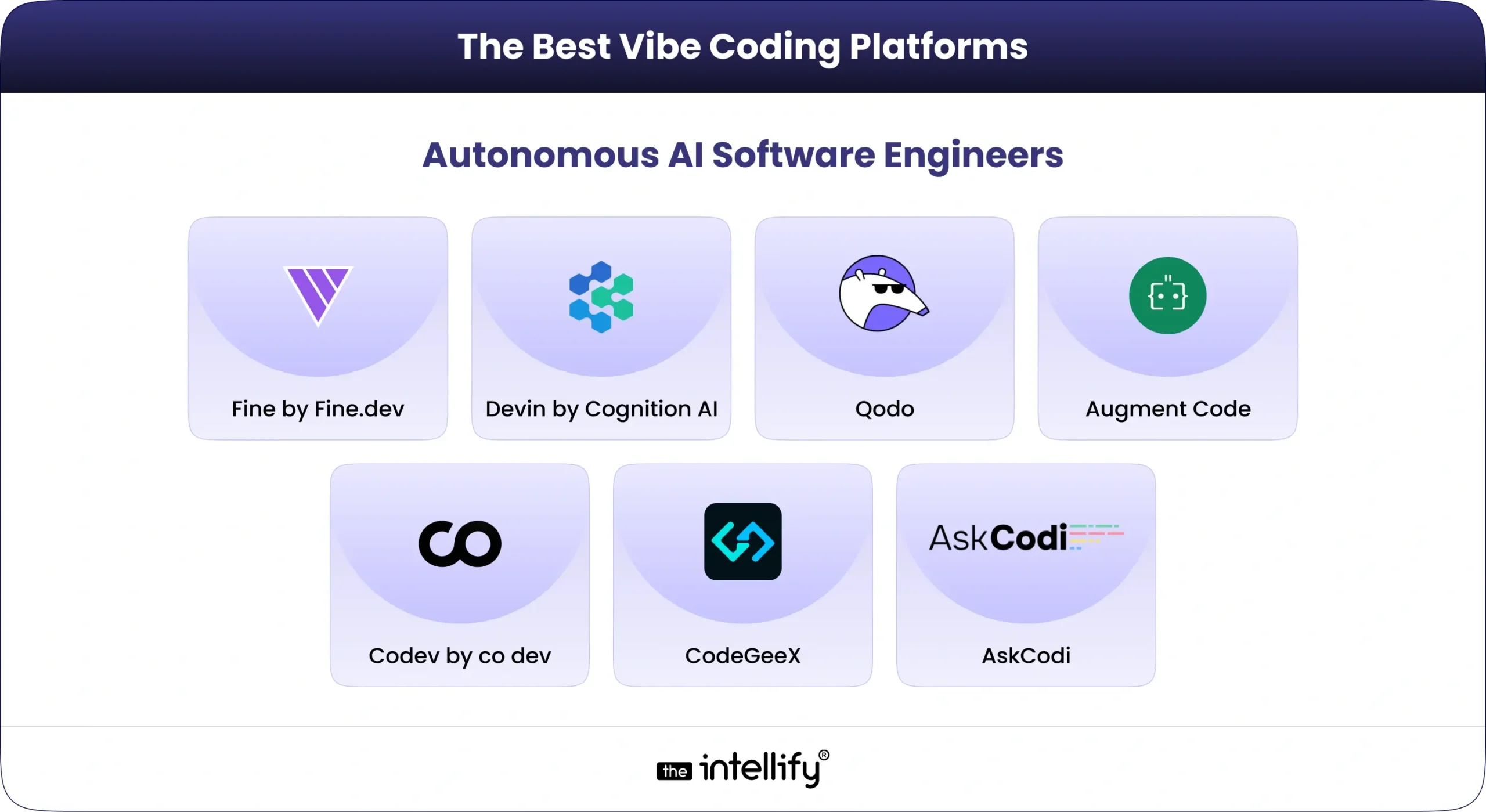
Fine by Fine.dev:
How it Works: Fine is designed to act as an “AI teammate.” Developers can assign issues to a Fine agent (e.g., from GitHub Issues), and the agent will autonomously analyze the codebase, propose a solution, and write the code to implement it. It operates asynchronously in its cloud development environment.
Key Benefits: Fine moves beyond pair programming to automate entire tasks and stories. Unlike assistants that help write code line-by-line, Fine’s agents make coherent, repository-wide changes to complete end-to-end tasks, significantly reducing the time spent on mundane work.
Devin by Cognition AI:
How it Works: Billed as the world’s first fully autonomous AI software engineer, Devin is equipped with its shell, code editor, and browser. It can plan and execute complex engineering tasks requiring thousands of decisions, learn unfamiliar technologies, and fix its own mistakes.
Key Benefits: Devin has set a new standard on coding benchmarks, demonstrating an unprecedented ability to handle entire development projects autonomously, from building and deploying apps to finding and fixing bugs in open-source repositories.
Qodo (formerly Codium):
How it Works: Qodo is an agentic AI coding platform that integrates into the development workflow to catch and fix issues before they become problems. It uses a powerful core agent with deep context awareness of a codebase to solve complex challenges. The platform is composed of several tools: “Qodo Command” for building and running agents from the terminal, “Qodo Gen” for coding and testing within the IDE, and “Qodo Merge” for automated code reviews in pull requests.
Key Benefits: Qodo’s primary focus is on improving code quality and reliability throughout the development lifecycle. Automating tasks like test generation and code review helps developers trust the software they produce. Teams that integrate AI code review report significantly higher rates of code quality improvement.
Augment Code:
How it Works: Augment Code is an AI assistant built for professional engineers working on large codebases. Its agent introduces “Memories,” which persist across conversations to learn a user’s coding style and project patterns, allowing it to tackle more challenging tasks over time.
Key Benefits: Its ability to learn and remember context makes its suggestions increasingly accurate and personalized. With an industry-leading 200K context window and native integrations with tools like Jira and Notion, it is exceptionally well-suited for complex enterprise environments.
Codev by co dev:
How it Works: Codev specializes in generating full-stack Next.js web applications. It combines agentic AI workflows with conventional software tools and a unique quantitative multi-sampling method to analyze problems, resolve issues, and assess the quality of its work.
Key Benefits: Its specialized, scientific approach to problem-solving allows it to achieve a high success rate on coding benchmarks. By building a code graph and parallelizing its research process, it can navigate repositories and find solutions efficiently.
CodeGeeX:
How it Works: CodeGeeX is a large-scale, multilingual code generation model with 13 billion parameters. It can generate code in over 20 programming languages and translate code between them. It is available as a free extension for popular IDEs, offering features like code completion, explanation, and review.
Key Benefits: CodeGeeX is open-source, and its code and model weights are publicly available for research. This allows for customization and fine-tuning, making it a flexible and powerful tool for multilingual development environments.
AskCodi:
How it Works: AskCodi is a versatile AI assistant that offers a suite of specialized “Codi Apps” for different development tasks, such as code generation, unit testing, documentation, and CI/CD pipeline writing. It integrates with major IDEs and also provides a “Codespaces” feature that allows the AI to interact with an entire project.
Key Benefits: Its application-based approach provides targeted tools for nearly every part of the software development lifecycle. The ability to “talk” to an entire project for summaries and insights is a powerful feature for understanding and managing large codebases.
AI-Powered Code Review & Quality Assurance
As AI accelerates code production, these tools are essential for maintaining quality, security, and maintainability. They act as automated guardians for your codebase.
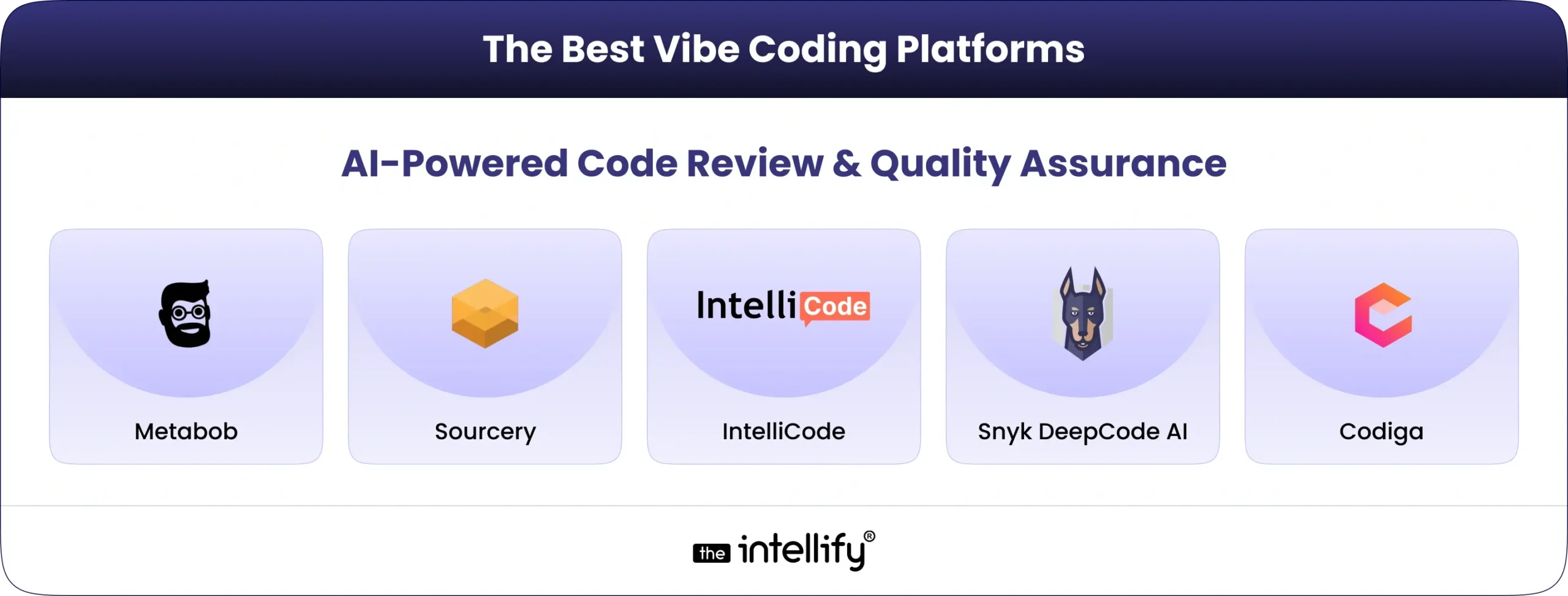
Metabob:
How it Works: Metabob uses a unique combination of Graph Neural Networks (GNNs) and LLMs to perform code reviews. The GNNs analyze the entire codebase to understand its logic and data flow, allowing it to detect complex problems like race conditions and unhandled edge cases that other tools might miss.
Key Benefits: Metabob excels at analyzing large, complex, and legacy codebases. Its GNN-based approach results in a very low rate of false positives and enables it to find subtle, hard-to-detect bugs.
Sourcery:
How it Works: Sourcery acts as an AI code reviewer that provides instant feedback on every pull request in GitHub or GitLab. It uses a blend of LLM analysis and its static analysis engine to review code for quality, security, complexity, and documentation.
Key Benefits: Sourcery aims to make code reviews 1000x faster. It accelerates knowledge sharing by providing summaries and diagrams for each change, and it continuously learns from developer feedback to improve its suggestions.
Visual Studio IntelliCode:
How it Works: IntelliCode is an AI assistant built directly into Visual Studio. It enhances the standard IntelliSense by using the context of your code and patterns learned from thousands of open-source projects to provide smarter, context-aware code completions, including whole-line suggestions.
Key Benefits: Its deep integration into Visual Studio provides a seamless user experience. It helps developers write more accurate code faster and can even detect repeated edits to help automate refactoring tasks.
Snyk DeepCode AI:
How it Works: Snyk is a developer-first security platform powered by DeepCode AI. It uses a hybrid AI approach, combining multiple AI models with curated security data, to scan for vulnerabilities in both human-written and AI-generated code in real-time, directly within the IDE.
Key Benefits: Snyk is purpose-built for security. It not only finds vulnerabilities with high accuracy but also provides “agentic fixes” that can automatically remediate issues in seconds, drastically reducing the time it takes to secure applications.
Codiga:
How it Works: Codiga performs real-time static code analysis as you type in your IDE or as part of your CI/CD pipeline. It uses customizable rulesets to check for security vulnerabilities, coding errors, and style issues, and can automatically fix many of the problems it finds.
Key Benefits: Codiga provides instantaneous feedback, helping developers write cleaner and more secure code from the very beginning. It helps enforce coding standards across a team and can detect issues like leaked secrets before they are committed.
Specialized AI Development Studios
These platforms from major tech players offer tightly integrated environments that combine powerful AI models with cloud services and infrastructure for a seamless development experience.
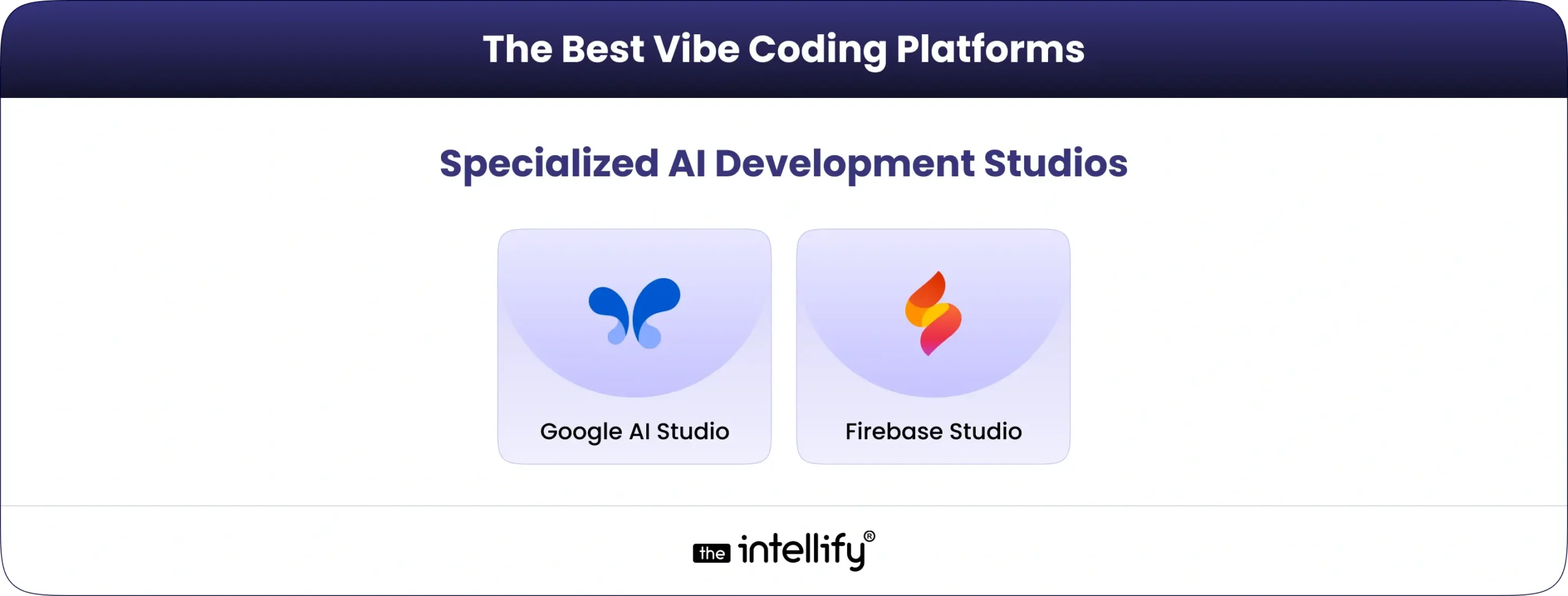
Google AI Studio:
How it Works: Google AI Studio is a web-based environment that provides the fastest way to start building with Google’s Gemini models. It allows users to quickly prototype ideas and integrate powerful AI capabilities into their applications by providing an API key.
Key Benefits: It offers fast and free access to Google’s latest and most powerful multimodal models, including those with massive context windows, making it an excellent platform for experimentation and rapid development.
Firebase Studio:
How it Works: Firebase Studio is an agile, cloud-based workspace that deeply integrates AI with Firebase’s suite of backend services. It unifies tools like Project IDX and Gemini in Firebase to provide a single, end-to-end platform for building, testing, and deploying full-stack AI applications.
Key Benefits: For developers in the Google/Firebase ecosystem, it provides a seamless experience, taking a project from a natural language prompt to a fully deployed and monitored application. It handles everything from prototyping and coding to emulation and deployment.
Partnering for Custom Vibe Coding Tools: The Expert Advantage
While the tools listed above offer incredible power, sometimes a project’s unique requirements call for a bespoke solution. Partnering with a specialized firm can bridge the gap between off-the-shelf capabilities and custom needs. For instance, vibe coding development partners like The Intellify specialize in creating tailored AI solutions, from custom LLM and Generative AI development to full-stack AI software, enabling businesses to build their own proprietary vibe coding tools.
Conclusion: The Dawn of Conversational Development
The rise of vibe coding and the proliferation of powerful AI code generators mark a fundamental shift in software development. The tools detailed in this guide, whether they are no-code platforms that turn plain English into fully functional applications or sophisticated AI assistants that act as expert pair programmers, all point to the same future: a future where development is more accessible, efficient, and conversational.
For non-technical founders and creators, platforms like Lovable, Bolt.new, and Softgen are breaking down the barriers to entry, allowing ideas to become reality in minutes instead of months. For professional developers, tools like Cursor, GitHub Copilot, and Devin are not replacements but powerful force multipliers. They automate the mundane, accelerate complex tasks, and free up mental energy to focus on what truly matters: building great software.
This new paradigm requires a new mindset, one that embraces iterative experimentation and values clear, high-level direction over manual, line-by-line implementation. The most effective creators of tomorrow will be those who learn to collaborate with their AI counterparts, guiding them with vision and expertise. The era of conversational development has arrived, and with these 35 tools, you are now equipped to join the conversation and start building the future.
FAQs
Q: What is vibe coding?
A: Vibe coding is an AI-assisted software development style where a developer guides a Large Language Model (LLM) using natural language prompts to generate, test, and refine code, focusing on the overall vision rather than line-by-line implementation.
Q: Who coined the term vibe coding?
A: The term “vibe coding” was coined by AI researcher Andrej Karpathy in early 2025 to describe a new, more conversational approach to programming with AI.
Q: What are the best AI code generators?
A: The best AI code generator depends on your needs. For rapid prototyping, tools like Lovable and Bolt.new are excellent. For professional developers, AI-first IDEs like Cursor and GitHub Copilot are top choices. Our guide details 35 of the best tools for various use cases.
Q: Are AI code generators worth it?
A: Yes, for most users. Studies show AI coding assistants can boost developer productivity by 20-50% by automating repetitive tasks. They also democratize development, allowing non-coders to build functional applications and prototypes quickly.
